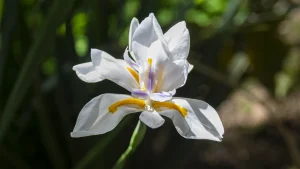Utila Marine Sanctuary
Of the islands that make up the department of the Bay Islands. Utila is the closest to the mainland at only 32 km. north of the city of La Ceiba and the smallest with 40 km2 in area, its population does not exceed 200 inhabitants concentrated in 4 km2, and in two small keys that are not considered within the limits of the refuge.
It is an island divided and crossed from north to south by a narrow channel. The western section that comprises 60% of the island does not exceed 5 meters in average height and is covered with mangroves, swamps and a flooded savanna that give refuge to a good number of migratory birds.
The eastern part is made up of several small peaks, the highest of 74 meters, surrounded by grasslands and guamiles. There are almost no floristic representatives of what was once the humid tropical forest.
Its best presented fauna are birds and then reptiles and amphibians. Among the endangered species found in Utila are the chachalaca (Ortalis vertula) and sea turtles such as the hawksbill that come to spawn on its small beaches. The crocodile (Crocodylus acutus) became madly extinct some 30 years ago and the only reported land tortoise from the three Islands is known from a shell found in the Utila swamps more than 30 years ago.
The coral reefs of this island are not as spectacular as those of Roatán and are more developed in its western tip. Utila also has 24 apparently aboriginal sites, one of these is considered the most important of the three islands, it contains mounds associated with other stone formations including walls and a possible paved road. There are also remains of the colonial European occupation.
There are four caves with tourist potential. One of them has a freshwater source that is supposed to communicate with the sea through a tunnel, a second cave is locally called “Morgan’s Cave”. The inhabitants say that this raven was occupied by the famous pirate Morgan who died and was buried in Utila. You can get to this island from the city of La Ceiba by plane and boat.



